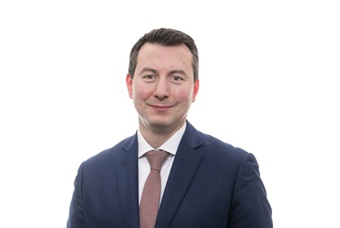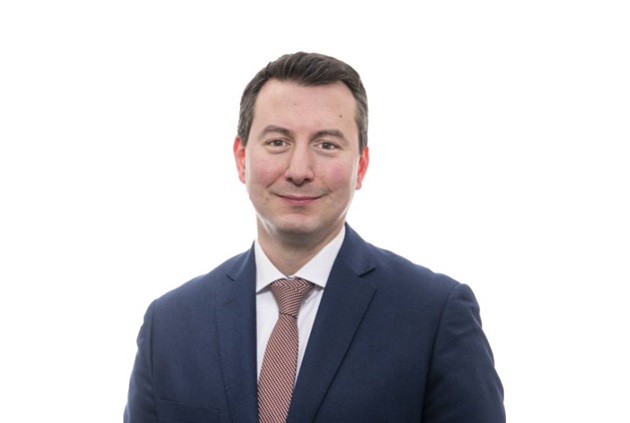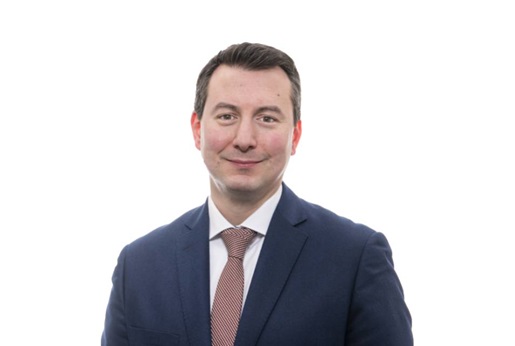Navigated osteotomy - A traditional surgical technique gets a new upgrade
Many of us take simple things, like getting up from a chair, walking downstairs, or popping over the road to the shops, for granted. But with the onset of painful, arthritic inflammation in the knee, even small everyday activities can become a bit of a luxury.
For several years now, the direction of travel in corrective knee surgery has been towards improving outcomes for knee replacements. And, for many patients who have explored a range of conservative treatment options, that’s still the best route. But one leading specialist is working to expand the range of surgical options – and help restore function and mobility in patients suffering from debilitating pain and stiffness in the knee.
Mr Sam Oussedik, an orthopaedic consultant specialising in all forms of knee surgery, is one of the few surgeons in the country to employ navigation-assisted osteotomy – a surgical intervention designed to preserve the knee joint and restore mobility.




Complex interventions with greater precision
An osteotomy is performed by making a deep cut across the bone and either taking a wedge of bone out and closing the gap or opening a gap up and inserting bone into the space. The size and angle of the cut determines the successful realignment of the bone, and that’s where computer navigation can improve accuracy of measurement and surgical precision.
To begin with, a number of infra-red trackers are fixed to the thigh bone and shin bone, and the shape of the joint is mapped, generating a complete, computerised 3D model of the knee. This allows the surgeon to track the relationships between bone surfaces through the entire range of motion of the knee. It not only makes it easier to accurately plan the operation but means the surgeon can monitor outcomes at each stage and make precise adjustments during the procedure itself.
“Accuracy of correction is a key success factor in limb realignment surgery,” explains Mr Oussedik. “Even tiny inaccuracies of a couple of degrees can lead to post-operative complications, or even failure of the surgery. So the navigation aspect really helps to support that.”
What’s key is the ability to accurately measure, plan and assess the patient’s joint intraoperatively. It allows the surgeon to carry out complex interventions with greater precision and means they can more fully tailor the procedure to each individual.
“Everybody is different, every knee is different,” says Mr Oussedik, “so you can’t approach every surgical intervention in exactly the same way. The computer navigation guidance allows us to personalise each and every procedure to the exact pattern of osteoarthritis or malalignment in that particular patient.”
Navigation technology
Combining the traditional technique of osteotomy (an operation to cut and realign the bone) with modern GPS-like technology, navigation-assisted osteotomy is a precise, highly individualised treatment for degenerative knee disease and traumatic injury. For many patients this approach promises a return to an active lifestyle, while avoiding or postponing the need for a total or partial knee replacement.
“We’re revisiting a very well-known joint realignment procedure, but with an important upgrade,” says Mr Oussedik, who practices at a number of HCA UK facilities. “By applying GPS-style, intraoperative navigation to quite a technically challenging procedure, we’re able to increase accuracy and improve outcomes for the patient.”
An alternative to knee replacement surgery
Although technically demanding, navigation-assisted osteotomy offers a potential solution to the problem of pain and immobility suffered by an increasing number of patients, without having to undergo a complete knee replacement.
“Knee replacement surgery is highly successful – but it’s not for everyone,” says Mr Oussedik. “The benefit of navigation-assisted osteotomy is that it gives the surgeon more flexibility to meet a broader range of needs. By postponing the need for a joint replacement, we can support patients to keep up a good level of functional activity and a healthier lifestyle. And, for a younger patient who, for example, had a skiing accident, and wants to get back to an active life, that can be a real gamechanger.”
Contact 020 3733 5966 to book a consultant appointment